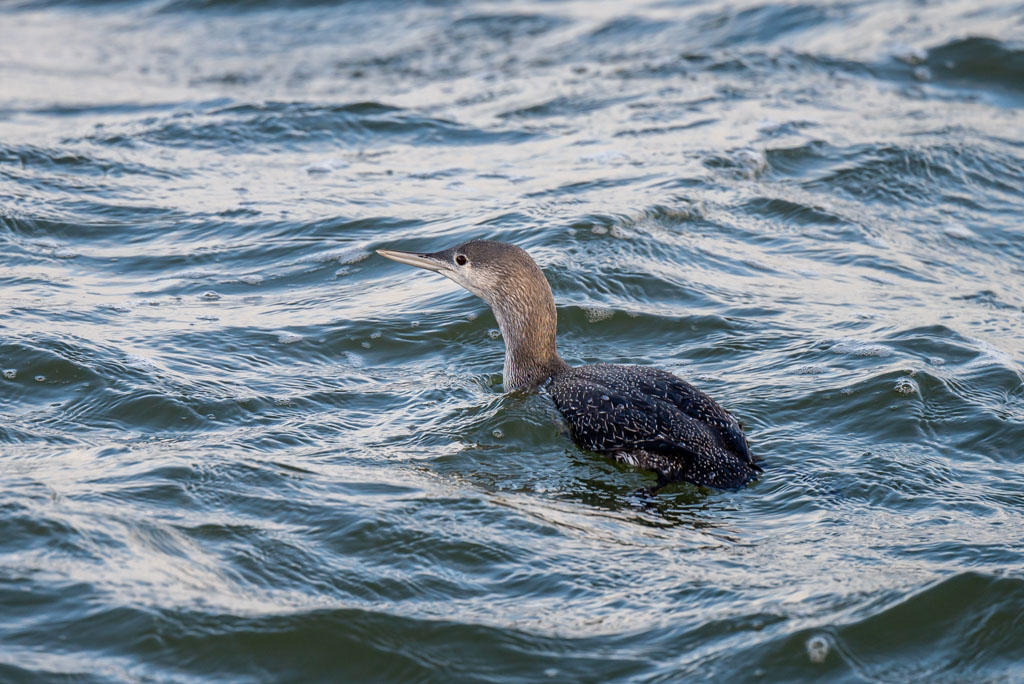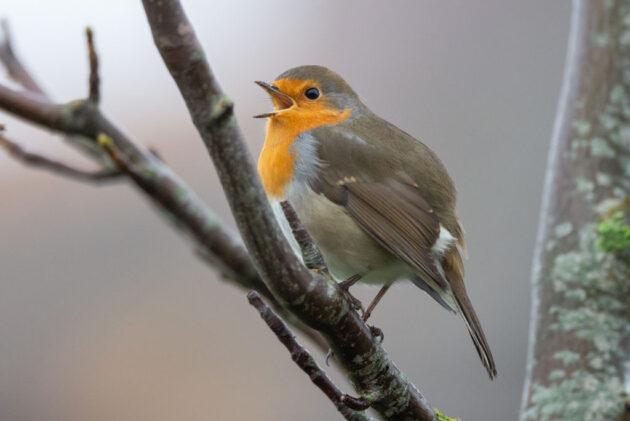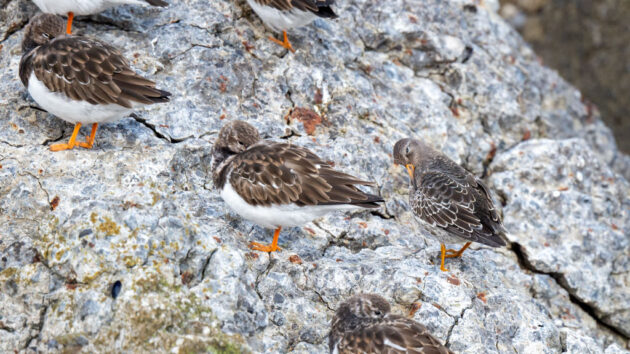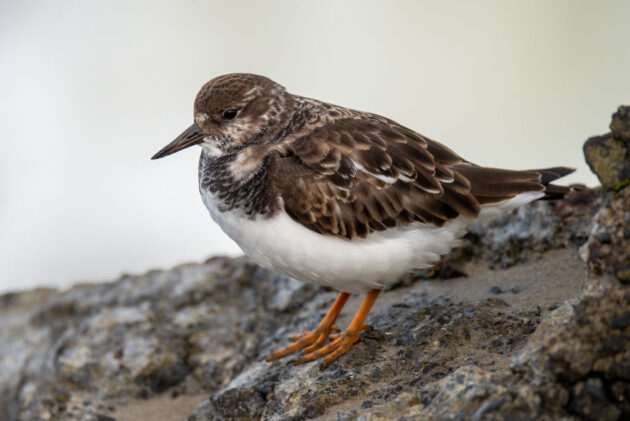
The pier in Ijmuiden, a coastal town west of Amsterdam, is a popular sea-watching site in the Netherlands as it allows one to get further out than from the beach. It is an excellent site in the winter months in particular, when seabirds including ducks, divers and grebes are quite reliable here. I’ve visited Ijmuiden once before, but due to strong wind the pier was closed during that visit. I was therefore eager to visit this popular birding site again, and being able to combine it with my trip to Texel (which I covered here in my last post) made it all the more convenient.
I arrived in the late morning to sunny and windy weather, but fortunately the wind wasn’t strong enough to warrant closing of the pier. It seems that this place is not only popular amongst birders but many other people using the acceptable weather to get into the fresh air, as the peir was quite busy in places and kite surfers crowded the near-shore waters south of the pier.
Before the start of the pier, European Robin, European Stonechats, Eurasian Greenfinches, Eurasian Linnet, Common Starlings and Common Chaffinches foraged among some rusty metal structures, while a Great Crested Grebe was diving around in the small harbour. A large flock of Dunlins and Sanderlings attempted in vain to find a calm spot to rest as they were either scared by kite surfers from the waves or people on the beach.

The start of the pier immediately produced two of Ijmuiden’s typical species, Purple Sandpiper and Rock Pipit. The former was much more wary than Ruddy Turnstones, and it seemed that fewer individuals were around than on my previous visit. However, Rock Pipit was very common for the first few hundred meters along the pier.

A close-by Red-throated Diver was lovely to observe. I’ve seen this bird many times now but I still always take my time looking at them, as even in their non-breeding plumage they look very elegant. Two Common Scoters were also swimming around, while Black-headed Gull, Herring Gull, Great Black-backed Gull, and the cute Little Gull were flying above. A very elegant Arctic Tern was foraging close to the pier, the first time I saw this bird in breeding plumage.
Further out at sea, both Razorbill and Common Guillemot were swimming amongst the waves, as was another Red-throated Diver. At the tip of the pier, several birders had set up their scopes for sea watching and I spent some time here as well. Most spots with good visibility were taken however, and the wind and sea spray did not make for the most relaxing environment. When I noticed that even the Ruddy Turnstones tried to find spots that protected them from the elements, I figured that I do not have to stay here for too long, and as I wasn’t too eager to scan for distant seabirds, I soon made my way back.

To conclude the visit, I checked out the area around the Kennemermeer, were several duck species can sometimes be seen. I only saw the regular garden birds as well as Goldcrest, Eurasian Sparrowhawk, and Common Pochard. Quite content with this haul of birds for the morning, I made my way back to Amsterdam.




 New writers welcome – please contact us for details.
New writers welcome – please contact us for details.

















Leave a Comment